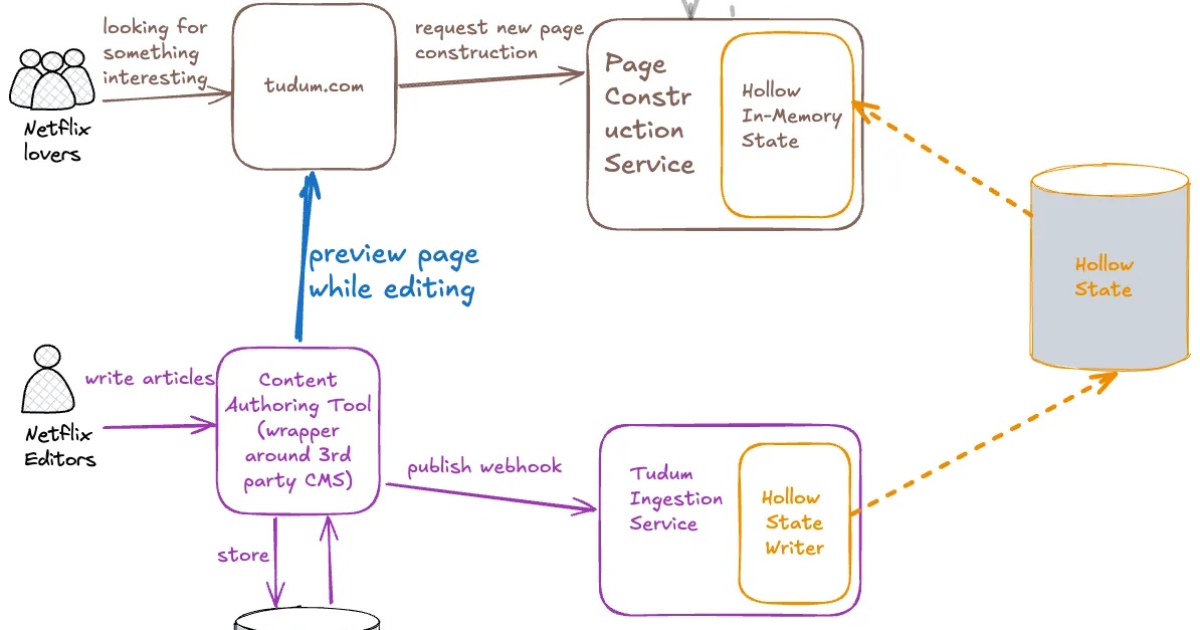
"Netflix initially implemented CQRS for Tudum, utilizing Kafka and Cassandra to optimize read performance while a third-party CMS managed content updates through a dedicated ingestion service."
"The previous architecture's decoupled read and write paths allowed for independent scaling, but CMS updates had significant delays in reflecting on the site due to caching refresh issues."
"With the implementation of RAW Hollow, an in-memory object store, Tudum's revamped architecture significantly enhances content preview speed during editing and improves page rendering times for users."
"The changes in the Tudum architecture were essential as the amount of content grew, which led to more pronounced delays of several seconds in showing updates in the previous system."
Netflix revamped its Tudum website architecture by replacing the original CQRS structure that utilized Kafka and Cassandra with an in-memory object store called RAW Hollow. This new architecture enables quicker previews during the editorial process and enhances page rendering speeds for users visiting the site. Initially, the architecture separated read and write operations to allow scaling but experienced significant delays in content updates due to caching cycles, especially as the content volume increased. The new implementation addresses these speed issues efficiently.
Read at InfoQ
Unable to calculate read time
Collection
[
|
...
]